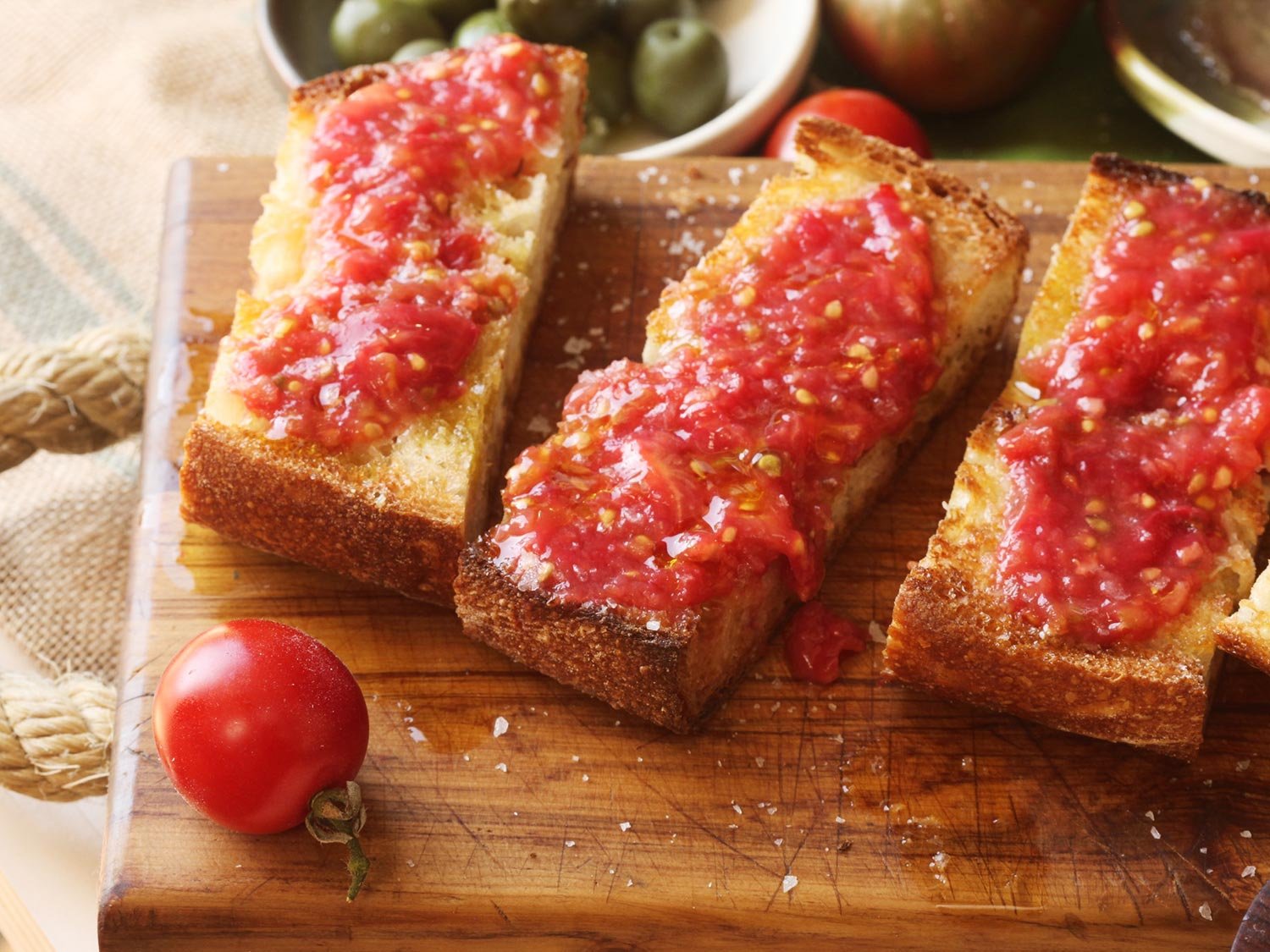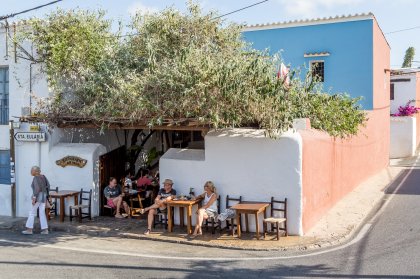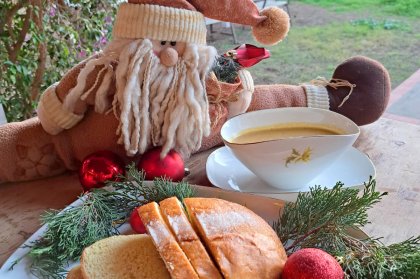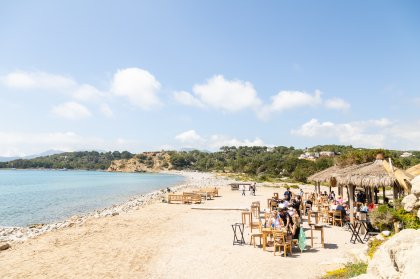Un desayuno y entrante popular, pan con tomate o simplemente pan, tomate, sal y aceite de oliva local.
Son muchos los visitantes que se acercan a Ibiza y Formentera para disfrutar de una oferta gastronómica en constante crecimiento. Están apareciendo nuevos e innovadores restaurantes por toda la isla, que nos ofrecen la oportunidad de degustar recetas exóticas en lugares de gran belleza. Sin embargo, creemos que es un buen momento para reflexionar sobre la diversidad de recetas locales, que se han transmitido de generación en generación durante siglos, y que son tradicionales en ambas islas.
Históricamente, los ocupantes de una finca o casa de campo típica se dedicaban a trabajar la tierra y producir alimentos. La mayoría de las pequeñas propiedades incluían un cerdo y un pequeño rebaño de ovejas y cabras que, además de proporcionar carne y lana, ayudaban a fertilizar y mantener la tierra, podando los árboles frutales para darles las formas interesantes que vemos hoy.
Una característica común de la mayoría de las fincas es el gran horno de piedra para hacer pan que se encuentra junto a la casa. Estos hornos, que se calentaban a alta temperatura con ramas finas de pino, podían producir grandes cantidades de pan a la vez. Por lo tanto, debido a la intensidad de la mano de obra, las familias se turnaban para producir pan para su comunidad local en días alternos.
A continuación, te presentamos nuestras sugerencias de desayunos y aperitivos que debes probar durante tu visita a Ibiza y Formentera.
Si deseas ver el resto de nuestra serie de artículos sobre la gastronomía ibicenca y formenterana, haz clic en los enlaces a continuación y descubre más sobre el delicioso pasado y presente culinario de las islas.
PARTE 2 PLATOS PRINCIPALES
PARTE 3 BEBIDAS
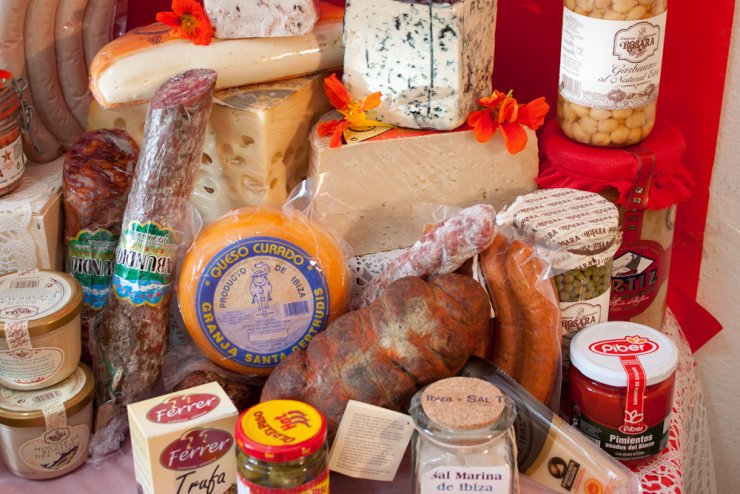 Una selección de productos gastronómicos locales ibicencos
Una selección de productos gastronómicos locales ibicencos
Desayuno
A muchos ibicencos, los eivissencs en el dialecto catalán local, les gusta empezar el día con el desayuno típico de pan con tomate: una rebanada de pan rústico tostado en una parrilla y luego untado con pulpa de tomate triturada, aceite de oliva y sal. También está delicioso con queso fundido y/o jamón serrano y se suele servir con café y un vaso de zumo de naranja natural. ¿Parece simple? Sin embargo, cada bar o cafetería parece tener sus propias variaciones, por lo que es divertido buscar tu favorito.
Te recomendamos que, si pasas por San Agustín, hagas una parada en la pequeña cafetería Can Guillem para degustar una tostada hecha con un poco de cariño extra. También es posible disfrutar de este delicioso desayuno a cualquier hora del día en varios lugares emblemáticos de Ibiza: en el Bar Costa, especializado en jamón, en el tranquilo y peatonal pueblo de Santa Gertrudis, o contemplando las tranquilas aguas de la playa de Talamanca en el Bar Flotante. Lee nuestro artículo completo sobre lugares recomendados para desayunar en Ibiza aquí.
Repostería
España es el mayor productor de almendras de Europa y una cantidad considerable de ellas procede de Ibiza. Los almendros son plantas muy sensibles y solo crecen en condiciones muy restringidas. Aportan una belleza inimaginable a la isla en febrero, durante la floración primaveral. Cualquiera que haya tenido la suerte de visitar la isla fuera de temporada habrá disfrutado sin duda de este fenómeno.
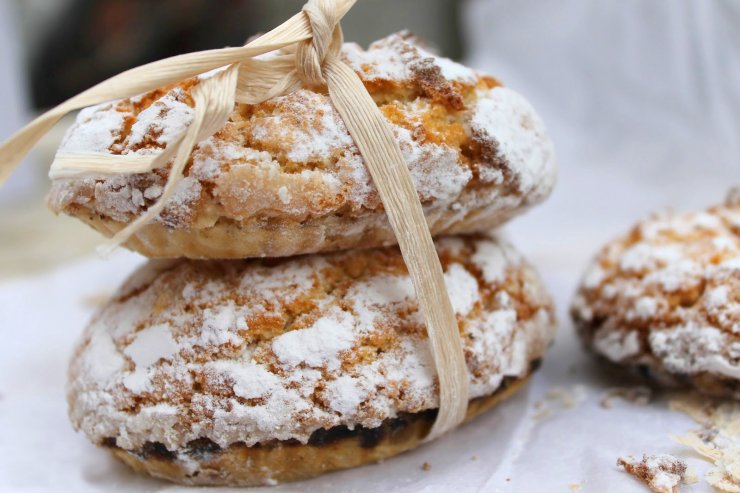 Magdalenas ibicencas: deliciosamente dulces y ligeras
Magdalenas ibicencas: deliciosamente dulces y ligeras
La producción de almendras aporta riqueza a las zonas rurales de la isla y, naturalmente, también se utilizan en las pastelerías locales. Las almendras se utilizan en uno de los dulces favoritos de la isla: las magdalenas ibicencas, elaboradas con una base de hojaldre con un relleno de mazapán de almendras y cubiertas con más almendras y azúcar glas. Visita la histórica pastelería Forn Vadell en la calle Canàries, justo al lado de la Avenida España en la ciudad de Ibiza, para ver uno de los mejores ejemplos.
 Ensaimadas simples
Ensaimadas simples
Originaria de Mallorca, la ensaimada es un remolino de masa ligera y esponjosa que resulta deliciosa para acompañar el café de la mañana. Las puedes encontrar sin nada, con solo una pizca de azúcar glas, rellenas de nata ligera o rellenas de cabello de ángel, las hebras que se encuentran dentro de las calabazas y se cocinan con azúcar. También son excelentes en la pastelería Forn Vadell.
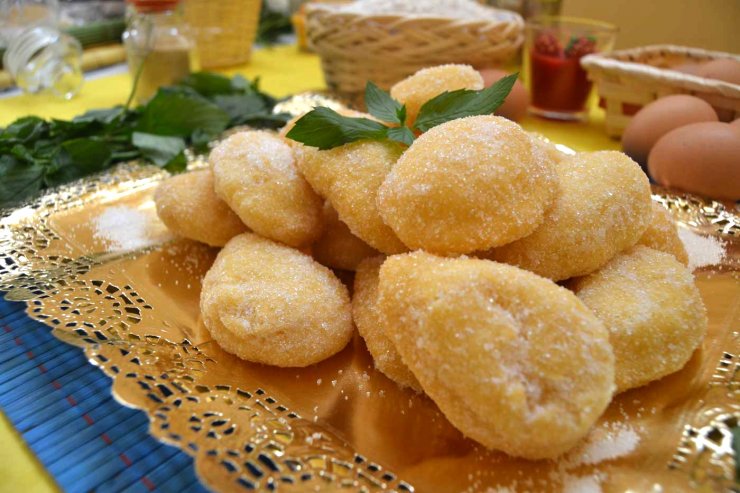 Un favorito en las fiestas locales, las orelletes.
Un favorito en las fiestas locales, las orelletes.
Las orelletes, que en catalán significan "orejas", se sirven en grandes cantidades en la mayoría de las ocasiones especiales. Estos pasteles se fríen, como rosquillas planas, y luego se bañan en azúcar. Como ocurre con muchas cosas ibicencas, el sabor del anís nunca está lejos.
Productos tradicionales y aperitivos salados
Una fecha importante en la vida rural tradicional española es la matanza, el momento en el que una familia sacrifica el cerdo que ha estado engordando durante todo el año. La gente del pueblo se une para ayudar a desmembrar al animal, asegurándose de que no se desperdicie nada. Es una parte muy importante de la vida rural, que une a las familias y alimenta a la comunidad. La manteca del animal es un ingrediente esencial en muchos de los pasteles locales.
En español, el nombre genérico para utilizar las sobras de carne es embutidos y dos de los mejores que se producen en Ibiza son el butifarró y la sobrasada. Como ocurre con la mayoría de los embutidos tradicionales, son mucho más sabrosos de lo que parecen o suenan.
 Embutidos típicos ibicencos de Companatge
Embutidos típicos ibicencos de Companatge
La sobrasada se elabora a partir de cortes de carne más finos y magros que muchos embutidos típicos y se condimenta con pimentón, que le da su característico color rojizo. El contenido se puede untar suavemente sobre pan y tostarlo en la parrilla. El sabor puede variar según el lugar donde compres la sobrasada, ya que muchos productores añaden pimentón picante para darle un buen toque. El butifarró puede ser blanco o negro, dependiendo de la cantidad de sangre añadida, y es más parecido a una salchicha británica tradicional. Ambas variedades son muy carnosas.
 Empanadas calientes o frías a cualquier hora.
Empanadas calientes o frías a cualquier hora.
Las empanadas son simplemente pasteles, generalmente rellenos de pimientos rojos, atún o carne, principalmente de cerdo y muchas otras variedades. Se venden en forma de pasteles individuales para una persona o, a veces, en tamaños más grandes para los que tienen más hambre o para compartir. Son muy similares a las tartas o empanadillas que se hacen en otros países y se pueden comprar, si tienes suerte, todavía calientes en la mayoría de las pastelerías.
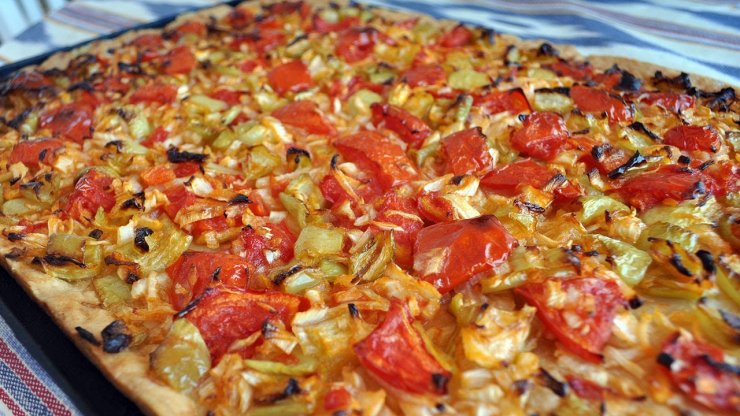 Coca típica con pimientos rojos y cebolla
Coca típica con pimientos rojos y cebolla
La coca es un aperitivo popular que se vende en toda Cataluña y en estas islas; es un tentempié habitual tanto para ricos como para pobres. Las cocas tienen una base de masa quebrada hecha con aceite, en lugar de mantequilla, y se pueden cubrir con casi cualquier combinación de ingredientes, tanto dulces como salados. Las cocas tienen primas similares en la mayoría de los países mediterráneos, pero en Ibiza las variedades favoritas están decoradas con pimientos rojos asados o acelgas y piñones y se pueden encontrar en todas las buenas pastelerías.
Quesos
Los quesos locales se elaboran principalmente con leche de cabra o de oveja. Hay una amplia variedad para elegir, desde quesos frescos y tiernos hasta quesos curados y añejos. Se pueden encontrar muchos quesos conservados en un envoltorio de hojas de parra o enrollados en una gruesa corteza de hierbas.
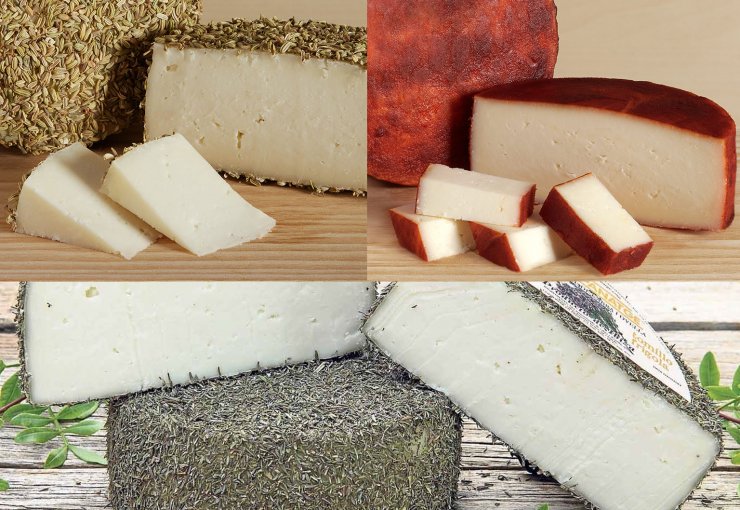 Quesos locales variados
Quesos locales variados
Para echar un vistazo a algunos de los productos tradicionales elaborados en la isla, echa un vistazo a la tienda online del productor local ibicenco Companatge.
Esperamos que puedas probar algunos platos tradicionales locales durante tu visita a Ibiza. Si deseas saber más sobre la historia culinaria de Ibiza y Formentera o probar productos locales, ponte en contacto con Ibiza Food Tours.
Así que ahí lo tienes: cómo desayunar y picar algo en Ibiza. Ahora es el momento de pensar en el almuerzo y la cena, así que pasemos a los deliciosos platos principales en Ibiza y Formentera. ¡Buen provecho!
Para una selección de restaurantes en toda la isla que se adapten a todos los gustos y presupuestos, dirígete a nuestra guía de restaurantes.
